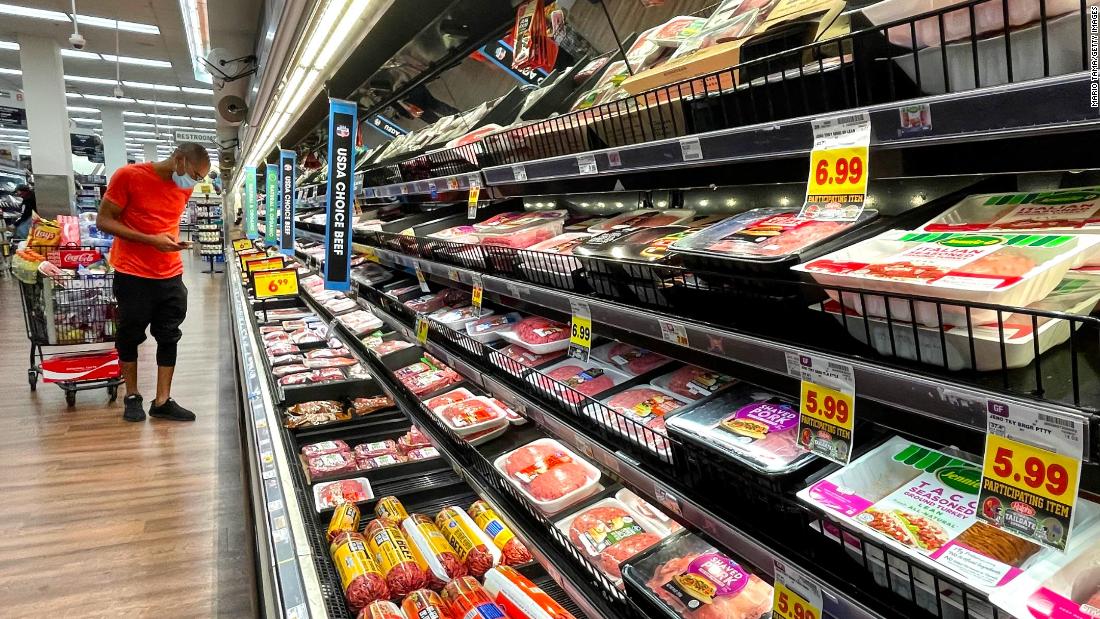
Let’s start with the simplest version: Inflation happens when prices broadly go up.
That “broadly” is important: At any given time, the price of goods will fluctuate based on shifting tastes. Someone makes a viral TikTok about brussels sprouts and suddenly everyone’s gotta have them; boom, sprouts prices go up. Meanwhile, sellers of cauliflower, last season’s trendy veg, are practically giving their goods away. Such fluctuations are constant.
Inflation, however, occurs when the average price of virtually everything consumers buy goes up. Food, houses, cars, clothes, toys, etc. To afford those necessities, wages have to rise, too.
It’s not always a bad thing. In the United States, for the past 40 years or so (and particularly this century), we’ve been living in an ideal low-and-slow level of inflation that comes with a well-oiled consumer-driven economy, with prices going up around 2% a year, if that. Sure, prices on some things, like housing and health care, are much higher than they used to be, but other things, like computers and TVs, have become much cheaper — so the average of all the things combined has been relatively stable.
Still with me?
All right, let’s cut to today, and why inflation is all over the news.
When ‘inflation’ is a bad word
Economists use two main gauges to track inflation in the United States, and while both eased between June and July, they’re still near their highest level in four decades.
And here’s where Econ 101 merges a bit with Psych 101. There’s a behavioral economics aspect to inflation, where it can become a self-fulfilling prophecy. When prices go up for a long enough period of time, consumers start to anticipate the price increases. You’ll buy more goods today if you think they’ll cost appreciably more tomorrow. That has the effect of increasing demand, which causes prices to rise even more. And so on. And so on.
That’s where it can get especially tricky for the Fed, whose main job is to control money supply and keep inflation in check.
How’d we get here?
Blame the pandemic. And Russia’s war on Ukraine.
In the spring of 2020, as Covid-19 spread, it was like yanking the plug on the global economy. Factories around the world shut down; people stopped eating at restaurants; airlines grounded flights. Millions of people were laid off as business disappeared practically overnight. The unemployment rate in America shot up to nearly 15% from about 3.5% in February 2020.
It was the sharpest economic contraction on record.
At the same time, the Fed implemented emergency stimulus measures to keep financial markets from tanking. The central bank slashed interest rates to near zero and began pumping tens of billions of dollars every month into the markets by buying up corporate debt. In doing so, the bank likely prevented a full-on financial meltdown. But keeping those easy-money policies in place over the past 20 months has also fueled — you guessed it — inflation.
Turns out that when you pull out the plug on the global economy, you can’t just plug it back in and expect it to start humming at the same pace as before.
Cars require an immense number of parts, from an immense number of different factories all around the world, to be built by highly skilled laborers in other parts of the world. Getting all of those discreet operations back online takes time, and doing so while keeping workers from getting sick takes even more time.
Economists often describe inflation as too much money chasing too few goods. That’s exactly what happened with cars. And houses. And Peloton bikes. And any number of other goods that became hot ticket items.
How’s the supply chain involved in all this?
“Supply chain bottlenecks” — that’s another one you see all over, right?
Let’s go back to the car example.
We know that high demand + limited supply = prices go up.
But high demand + limited supply + production delays = prices go up even more.
That’s just one example of the disconnect in the global supply chain. Because new cars have been slow to roll in, used car demand shot through the roof, which drove overall inflation higher. In some cases, car owners were able to sell their used cars for more than what they paid for them a year or two prior.
What happens next?
Prices and wages could be starting to ease, but will likely remain elevated for some time. For how long, and by how much, depends on countless variables across the globe.
Russia’s invasion of Ukraine dashed hopes that prices would come down significantly in 2022.
And there’s no telling what kind of new shocks — a resurgent Covid variant, a massive shipping container getting stuck in a waterway, a natural disaster — could set back progress.
There’s no single government or central bank that can fix the inflation resulting from those global disruptions.
But central banks are doing what they can. In the United States, the Fed began raising rates in March by a quarter of a percentage point — its first increase since 2018 — and have since raised rates four times this year. There’s no sign that they’ll stop anytime soon.
